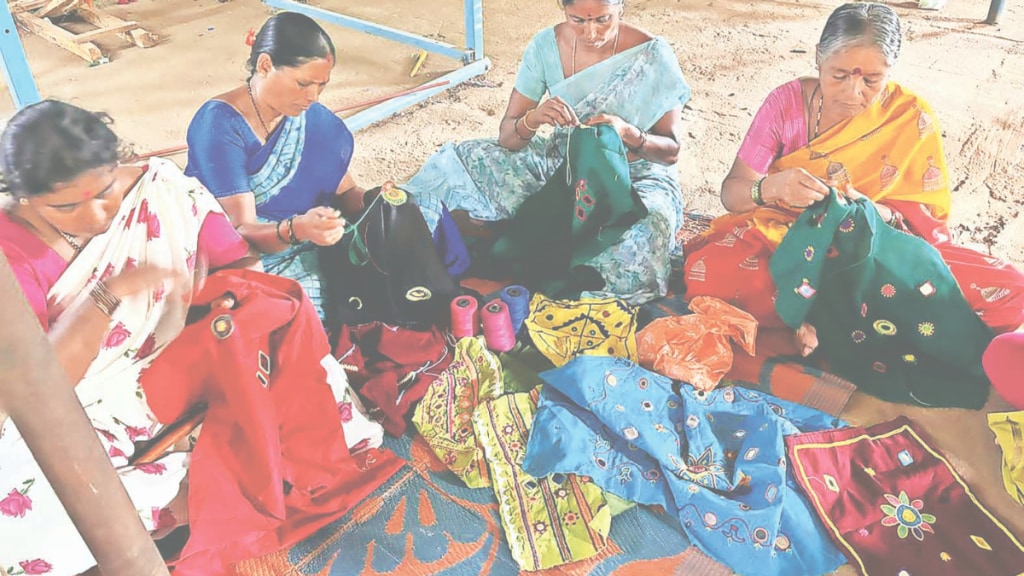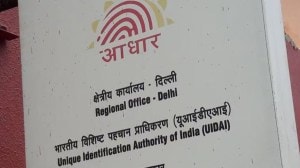In December 2022, a report by the Asian Development Bank Institute (ADBI) stated, “India’s creative economy is large, but its untapped potential is even larger.”
This rather bold statement by the think tank is supported by inimitable figures, especially when it comes to the textile industry—as per Invest India, the handicrafts sector employs over 6.8 million people. The handloom sector, too, employs over 3.5 million people, and over 2.5 million allied workers. The total export of handicrafts during the last financial year was over $1,800 million.
While the data might be promising, there’s a huge lag on the grassroots level that’s been troubling India’s creative folks—the artisans, the weavers, and even the traders. This is why some of them are now advocating to formalise the creative economy to make their issues heard.
The big question
But why is there a need to formalise the creative economy under one umbrella term—especially when it comprises dozens of vast sectors that are largely self-organised? “That is the very reason,” says Rakhi Sarkar, founder of the Kolkata-based CIMA Art Gallery and chairperson of the recently launched All India Initiative on Creative Economy.
“These sectors are self-organised and even unorganised in certain spaces. They are functioning, but barely,” she says.
People in the creative economy have been facing everyday hassles, say stakeholders, which might seem minute or inconsequential, but have been causing them significant losses.
Consider this, for instance. In 2017, soon after the Goods & Services Tax (GST) was brought in, work for weavers across the country started drying up due to the 5% tax imposed on cotton and yarn.
In 2024, the situation is still grim. Sujata Swaragi, a small enterprise owner from Bengal who works with Kantha artisans in and around Kolkata, shares that a lot of the handicraft workers are leaving the profession and taking up odd part-time jobs because of how cumbersome the process has become for them.
Swaragi explains that since most of the handloom workers she collaborates with are illiterate, it’s really difficult for them to understand how to file GST or how the e-way bills work. “The people I work with have only one lawyer in their village who annually helps them file their income tax returns. But if he’s not there, there’s no guarantee that they’ll receive their TDS or their refunds,” she adds.
Most of the artisans, she says, are now in their old age and their children are either migrating to other cities, or taking up driving or mechanic jobs.Sarkar also mentions how some handicraft workers she previously used to work with in Odisha have now taken to only sculpting deities because of the tax exemption.
Make no mistake, the craft is not the issue here. These people are skilled, but everything before and after is taxing for them. “The foundation of the creative economy is in the rural spaces. They are being penalised for no fault of theirs. With no government intervention, we are losing the art due to the nitty-gritty,” says Sarkar.
Gajam Govardhana, a master weaver and a Padma Shri awardee, agrees with them. His woes are very similar to Swaragi’s, but unfortunately, that’s not where they end.
Govardhana tells FE that, for weavers, work has started drying up as have their incomes. “Earlier, there used to be orders placed by state emporiums, the central emporium, the Handloom Export Promotion Council—but now there’s no support from either of these bodies. Weaving is an art that requires the effort of the entire family, but the kids don’t want to learn how to use the handloom because there’s no guarantee of work,” he says.
Sunita Shanker, a crafts-based fashion and textile designer with over three decades of experience, also feels that there’s a need to formalise the creative economy because while Indian art forms have reached global platforms—it’s the individual efforts that are showcased from time to time, not a united effort.
She makes two points—firstly, there’s a need to acknowledge every person in the value chain, from the farmer sowing the seeds, to the artisan making the product, to the trader selling it. For a simple cotton gamcha that you buy, there’s someone dyeing it, someone embroidering on it, someone tracing, someone block printing, someone identifying the colour and pattern, and someone designing it. And secondly, the creative economy provides livelihood and the stepping stone for empowerment to many women.
While you look at these concerns being raised by the stakeholders, it’s pertinent to recognise the scale of this economy too. According to figures from Invest India, which comes under the ministry of commerce and industry, “the domestic apparel and textile industry contributes 2.3% to the country’s GDP and 12% to exports.” The industry is also expected to achieve “$250 billion textiles production and $100 billion exports by 2030.”
Unfortunately, it’s not just the textile industry. Performing artistes across the board are struggling too.
In 2022, a study by Kafqa Academy found that India’s performing arts market was valued at $3.8 billion. But Toshiva Jain, a 26-year-old theatre actor, shares that people in the industry barely can sustain themselves.
Jain has seven years of experience and is a member of the Delhi-based group Theatre of the Oppressed. But she works as a consultant too to be able to sustain herself.
“On an average, it takes 4-6 months for a stage play to come to fruition. At the end of that time period, if you get paid `30,000 for all your work, it’s not enough. And after years of unpaid or little-paid projects like this, artistes are usually forced to give up to make ends meet. Only the privileged can afford to pursue this,” Jain tells FE.
The policy solution
And where does the answer to these issues lie? “Policy and advocacy,” comes the unanimous reply from the people that FE spoke to.
Sarkar says, “We want to streamline the processes and norms that people in the creative economy need to follow. Since this encompasses various industries, we want to draw up issues and the everyday hassles that stakeholders in each sector have been facing, and then take them to the state and central governments for a solution.”
But Swaragi has a differing opinion here. She stresses that rather than streamlining the creative economy by making the processes similar for each industry—it’ll be of more value to let the differences be, and work around them.
The point is valid. Homogeneity could probably dilute the output the sectors are producing. Meha Jayaswal, associate dean of fashion communication and fashion business at Pearl Academy, says that when it comes to the arts, there’s no dearth of it in our country, what with our rich and diverse cultural heritage—with different brands of music from different regions, distinct creative filmmaking from a diverse set of industries, and many varieties to offer when it comes to fashion, literature, cuisines as well.
However, where we lack is marketing these well and organising them too.
Another way to help promote the arts, says Govardhana, is an exemption from taxes like GST and providing subsidies to weavers and artists. He adds, “Like the government buys produce from farmers at a Minimum Support Price (MSP), it would be hugely helpful if the same is done for us.”
What all the stakeholders also point to is for the government to be sympathetic to the plight of most people working in creative occupations, and for them to opt for simple and sustainable procedures—be it in the realm of patents, of legalities, of customs, or of trade regulations. At the same time, systems are also needed in place to establish the ethos of ethical practices.
But before doing any of this, Swaragi insists that the foremost need is to educate people in the rural areas. Her word of advice and advocacy is to ensure that people know how to read before they are given five different forms and links to work on. Jain also says that promotion of the arts should begin at primary levels like in schools and colleges. Government funding and corporates through their CSR projects can make significant difference, she says.
Shanker suggests something on similar lines too. “Building community support by teaching these craft-based skills would help promote the arts too. This would also help represent the issues of the grassroots in front of the government,” she says.
Jayaswal totally agrees with these recommendations. She tells FE, “By honing students’ critical thinking, technical skills, and infusing a passion for innovation, we can empower our students to become catalysts for change and contribute meaningfully to the global creative landscape. And, another very important role that we can play through educational institutes is to generate more entrepreneurs for the creative economy to prosper.”
At the same time, Ananth Padmanabhan, CEO, HarperCollins, comments, “In its essence we need policies that allow anyone to join the creative economy, practise their art form and reach their audiences, receive support from administrations both at the state and central level to reach global audiences, have the right tax framework to enable growth, ensure IP rights protection so we don’t lose to piracy, and protect freedom of expression.”
There are of course other issues that need urgent attention too—the “uncertainty of the market,” managing the efficiency of the creative industry, figuring out the “true economic value of intellectual property (as per the ADBI report),” and raising funds.
While all this does require intervention, Padmanabhan points to the need to let the arts remain accessible and artists without the worry of self-censorship or being challenged for their views.
But, what these experts also emphasise on is the need to keep up with the ever-evolving creative economy. The approach has to be flexible, they insist— with the need for the government, private players, and artists to be on the same page and be amenable to change. “The rules might need to be revised every few years—to address newer changes with AI, with existing regulations, etc,” says Sarkar.








